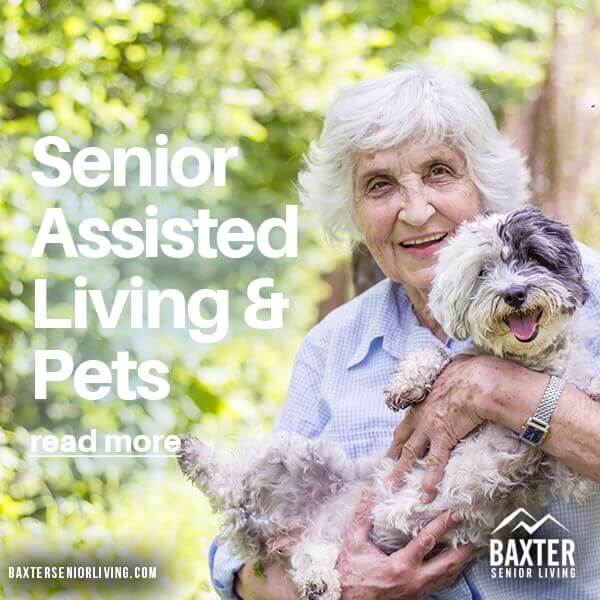We LOVE pets at Baxter Senior Living!
As our Alaska population ages, more and more people are turning to assisted living facilities in order to stay as independent as possible while still receiving the daily care they need. Assisted living facilities can provide help with bathing, dressing, grooming, and even eating or using the bathroom. These facilities are usually made up of small apartments or single rooms with hotel-style dining, laundry, and recreational amenities. Assisted living is for the person who wishes to stay independent but needs that extra helping hand each day due to mental or physical challenges.
One disappointment that many seniors face when realizing they must leave their own home behind to move into an assisted living community is the probability they will be losing their cherished pet. To many seniors, who are often cut off from society or their families, their pets have become an integral part of their lives. Faced with this prospect, many become depressed, lonely, and even hopeless.
But there is hope for the senior pet owner. As assisted living facilities strive to make the environment more representative of the outside world for the residents, more and more are beginning to include pets.
There’s no denying the mental and physical benefits of pets, according to the U.S. Centers for Disease Control and Prevention. Interacting with animals has been shown to lower both cholesterol levels and blood pressure, stimulate mental processes, and alleviate depression. Because of these health benefits, many senior care facilities have started embracing programs such as therapy pets or in-house pets. Even if the residents must leave their own pets behind, they can still interact with dogs and cats through these programs, receiving the mental and physical stimulation that petting and caring for and about animals promotes. Some facilities allow residents to bring their own pets with them if they are well-behaved, socialized, and in good health. Often, even if the resident passes away, the facility will keep the pet on as a contributing community member.
Trained companion animals are another asset to seniors who may be limited by declining mental or physical health. Often dogs can be trained to assist with turning lights off and on, retrieving a ringing phone, or opening and closing doors. Some dogs can even sense seizures long before they happen and alert their owners to take up a safe position. Other companion animals can reduce anxiety, boost confidence, and relieve depression simply by their presence. These companion animals are trained by professionals and have credentials as service animals, much like guide dogs for the blind.
If you or someone you love is considering moving to an assisted living facility but don’t want to leave your beloved pet behind, be sure to include questions about pet ownership when you research your options. If the community you are interested in agrees to consider you bringing your pet with you, be sure to have your pet earn a “Good Citizen” certificate. If the assisted living community has a “No Pet” policy, present them with the proven advantages of pet inclusion and ask them to rethink their policy. If your options don’t include the possibility of pet ownership, ask whether they have or will institute a therapy pet or in-house pet program.

